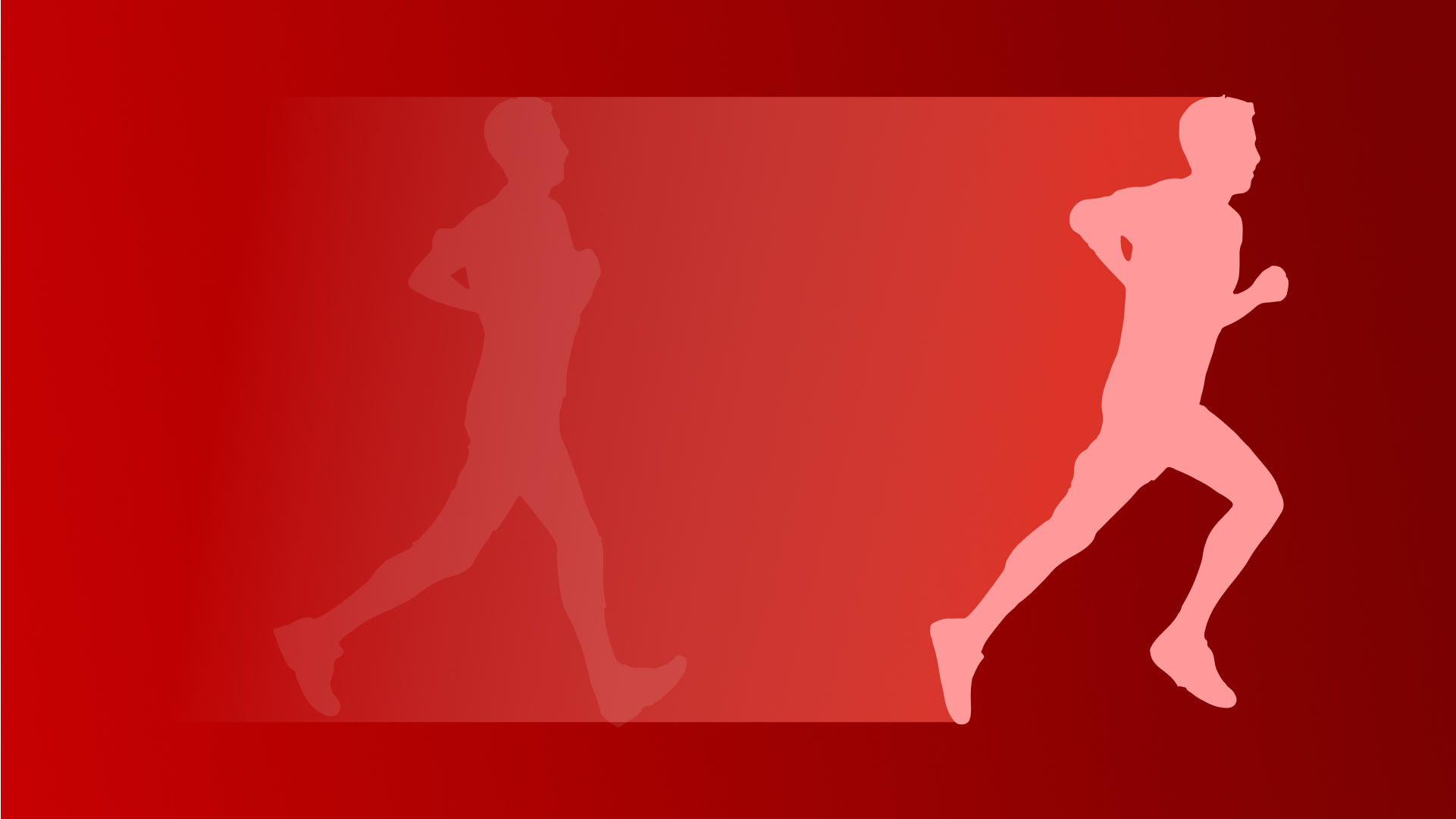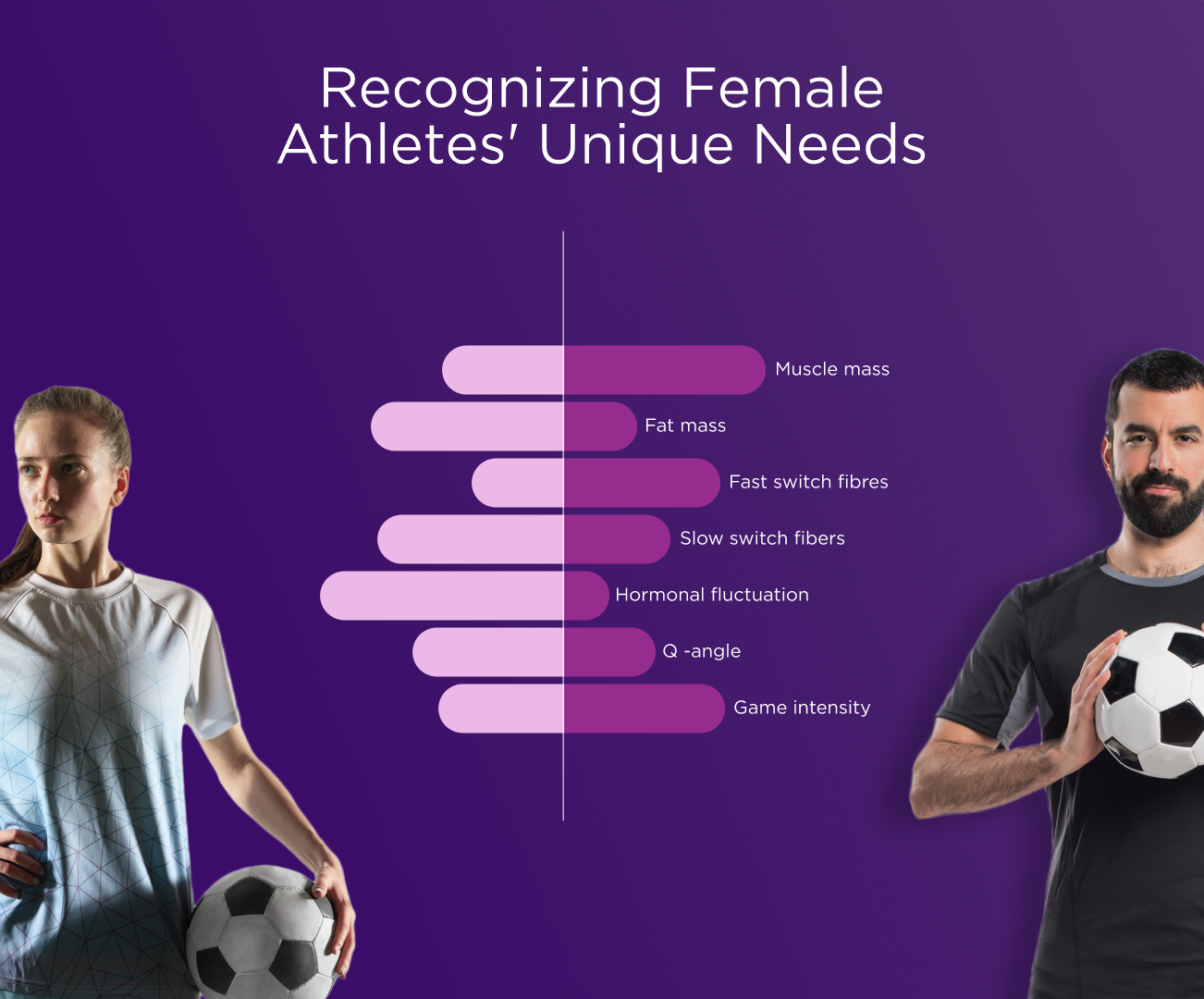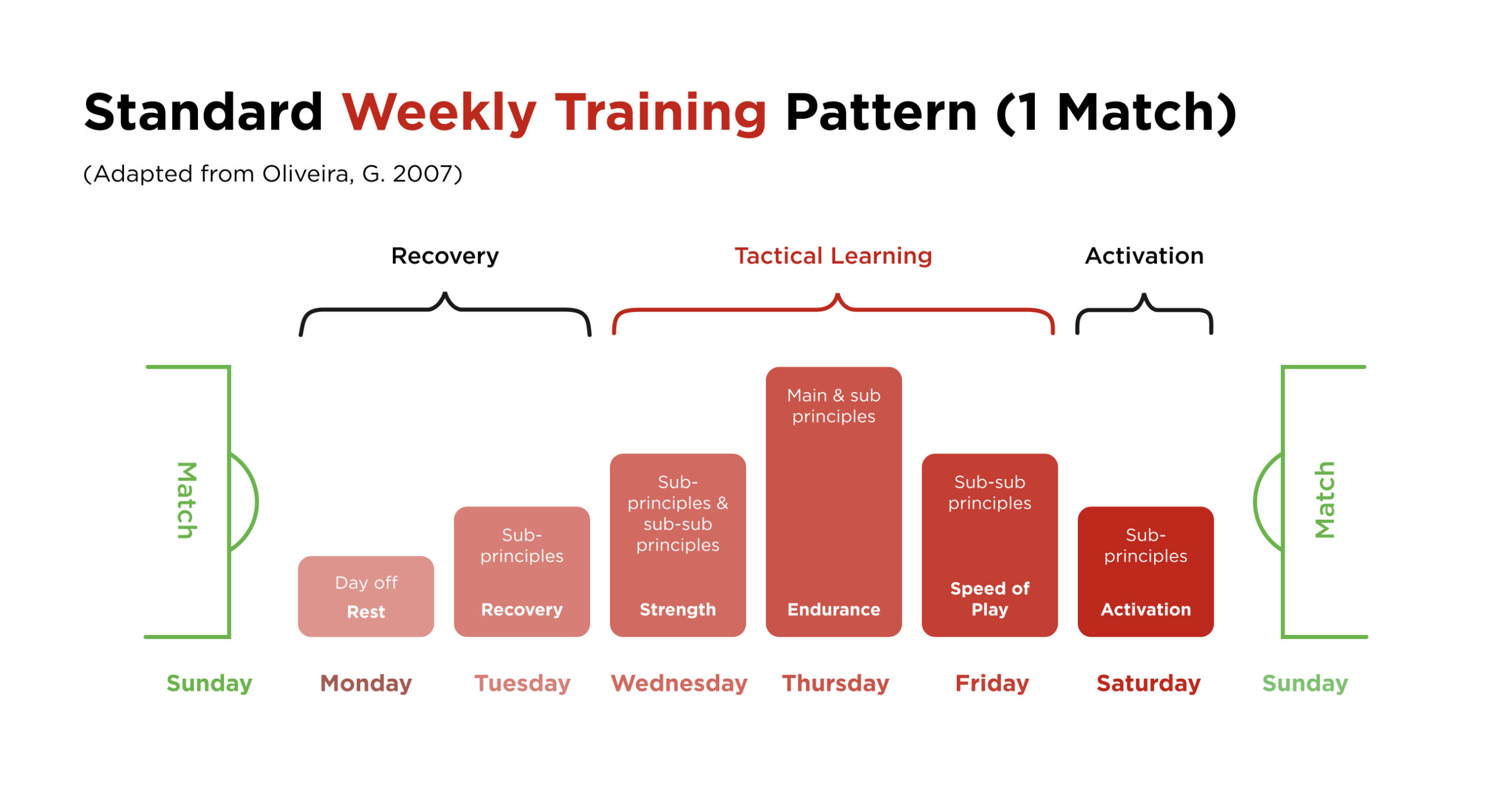Summary of My Previous Blog Post: Why Walking Works
So we have learned that walking is an accessible and effective form of exercise suitable for people of all ages and fitness levels. It offers a wide range of health benefits, from improving cardiovascular health and muscle strength to reducing stress and enhancing overall well-being. Regular walking, even at a moderate pace, can lead to significant improvements in fitness, fat loss, and blood pressure control. It’s an enjoyable activity that can be integrated seamlessly into daily life without the need for special equipment or memberships.
Introduction to Running for Beginners
After discovering the benefits of regular walking, the next activity we can engage in to enhance cardiovascular fitness and endurance is running. Of course, if we are beginners in running, we first need to learn the basics, but also be aware of our limitations as beginners, all to prevent injuries and overtraining so that this activity truly becomes a joy and fun.
Vedran Markotić et.al. have reported that studies have demonstrated that consistent running leads to several positive psychological changes across diverse populations (Gary & Guthrie 1972, Jorgenson & Jorgenson 1979, Blumenthal et al. 1982). Most studies have focused on the benefits, indicating that maintaining a regular running routine promotes both physical and mental fitness and can effectively help manage stress (Greist et al. 1978, Solomon & Bumpers 1978, Wilson et al. 1980, Leer 1980, Gondola & Tuckman 1982).
In a study conducted by Kenneth (1983) among ordinary nonprofessional runners, respondents were surveyed about the psychological aspects of running. Many reported starting running to improve their health, and nearly all noted mental and emotional benefits including tension relief, improved self-image, and enhanced mood. About half described experiencing trance-like states, enhanced visual imagery, and creative episodes. Two-thirds reported having experienced the “runner’s high” in nearly half of their runs. Possible explanations for this phenomenon include self-hypnosis, increased norepinephrine in the central nervous system, and elevated endorphin release.
Start Slowly – Patience Wins
Just like with walking, it is very important to start running gradually through a combination of walking and light jogging, and then gradually increase the intensity based on our abilities and progress with interval training. This helps develop endurance and allows the locomotor system to adapt to the impact forces that occur on the joints and bones, especially if the muscles are not adequately developed for this activity.
The best approach for beginners is certainly to find a coach who will teach you the proper running technique and determine the appropriate training loads, or alternatively, join an organized beginners’ running group. The duration of a beginner runner’s program is recommended to be 9 weeks for individuals in good health without issues related to excessive body weight, the cardiovascular system, or other chronic conditions that contraindicate running. Of course, there are limitations in terms of time and finances, so not everyone is able to have a personal trainer or join an organized group. However, there are solutions and methods for this which will be explained further in the text.
Proper Footwear – All About Comfort
When starting with running, we also need equipment suitable for this activity. Depending on the season and weather conditions, this typically includes a hat, jacket or raincoat, shirt and base layer, tights, comfortable track pants or shorts, and the most important part of the gear – running shoes. There is a wide range of different shoes to choose from when making a purchase decision. Here, we will provide simple guidelines based on scientific research to help you select shoes that will best suit your activity.
Starting with the assumption that as recreational runners, we do not have access to major sports brands to create an ideal personalized running shoe specifically for us, we will adhere to certain selection principles based on research. Michaud & Thomas C., authors of “Injury-Free Running,” have reported that some experts argue that you should choose a shoe based on your arch height, while others recommend selecting a shoe based on your pronation level. To resolve this controversy, Dr. Nigg studied the relationship between running shoe selection and running injuries. He found that when runners choose shoes based purely on comfort, they are much less likely to sustain injuries.
Dr. Nigg also demonstrated that self-selected comfortable running shoes enhance efficiency by reducing oxygen consumption. It appears that you don’t necessarily need to spend a big amount of money on a pair of running shoes to achieve slight improvements in efficiency. Because the most crucial factor for comfort is that the shoe fits your foot perfectly, it’s important to know how to check the length, width, and fit of the heel counter. To check the length, fit the running shoe to your larger foot (everyone typically has slight differences between right and left shoe size). When standing, the tip of your longest toe should be about the width of your thumbnail from the end of the shoe.
Selecting the proper shoe width, both in the forefoot and rearfoot, is essential. The widest part of the forefoot of the shoe should align with the location of your metatarsal head. Always ensure that the running shoe securely cradles your heel.
Scientific Insights on Running Shoes
However, Dr. Nigg’s research is limited to studies up to 2014. According to recent research, recreational runners covering high mileage should avoid zero-drop shoes and opt for running shoes with a minimum of 8 mm heel elevation. On the other hand, low-mileage runners may benefit from shoes with a heel drop ranging from 0 to 6 mm. Maximalist shoes, which increase rearfoot pronation upon contact, should be avoided by beginner runners unless they fit perfectly and feel very comfortable. In that case, take your time to break them in. Additionally, consider preemptive tibialis posterior exercises to reduce rearfoot pronation associated with maximalist shoes.
Michaud & Thomas C. emphasize the importance of research published more than 30 years ago. Jorgensen demonstrated that a snug heel counter can reduce impact forces at foot strike, decrease activity in the quadriceps and calf muscles during stance, and improve overall efficiency. The impressive results of this study are attributed to the fact that a snug heel counter prevents displacement of the calcaneal fat pad, which is known to absorb shock more effectively than any synthetic material. Although Pebax did not exist at that time, it is likely that if a comparison were made today between the calcaneal fat pad and Pebax, the fat pad would be superior.
However, in the end, it is most important to trust the feeling of comfort when you put on your shoes. Of course, you will consult with your coach and colleagues, but above all else, as research has shown, comfort is key. No matter how high-quality the shoe may be, if it is not comfortable, our body will naturally try to avoid that discomfort, leading us unconsciously to compromise our running technique and enter into a form of compensation that can ultimately lead to injury.
Running Technique – Energy Saver
One of the most important factors in running is proper running technique. Adopting the correct running technique over time will enable us to expend less energy while running, be more economical, and consequently, allow us to run longer and faster. It is important to note that in recreational running, we must constantly think about our running technique because we did not develop it into automatism during our youth, which is understandable since not all of us are competitive runners. In this post, we will focus solely on the basics and dive into the complete technique in a separate post.
1. Running Tall
When you run, you should maintain an upright posture, creating a straight line from your head to your hips to your feet. If you’re unsure of this posture, stand naturally and take a deep breath; you should feel your body straighten. This upright position optimizes your running form. Leaning too far forward or backward expends more energy and diminishes your power utilization. Proper posture allows you to maximize the efficiency of your arms and legs during running.
2. Arms
Position your hands at your hips with your elbows bent at a 90-degree angle. When you swing your arms, the movement should originate from the shoulders, with your arms and hands moving straight forward and backward. Avoid keeping your hands up near your armpits and swinging your arms across your body. This incorrect motion diminishes the strength in your shoulders and causes unnecessary twisting of your body, resulting in wasted energy.
3. Running Stride
Many individuals are heel runners, with their heels being the first point of contact when their foot strikes the ground. This is often due to overstriding, where the foot lands in front of the hips instead of below them. Overstriding typically leads to injuries and slower running speeds because it acts like “hitting the brakes,” increasing pressure on joints and shins while impeding speed. To correct this stride issue, many individuals will need to shorten their stride, which may result in taking more steps. Initially, this adjustment may feel awkward, but with practice, it will improve.
To assess if overstriding is an issue, individuals can have someone record their running form and check where the foot lands in relation to the hips. It’s important not to alter running form during recording to ensure the video provides accurate feedback.
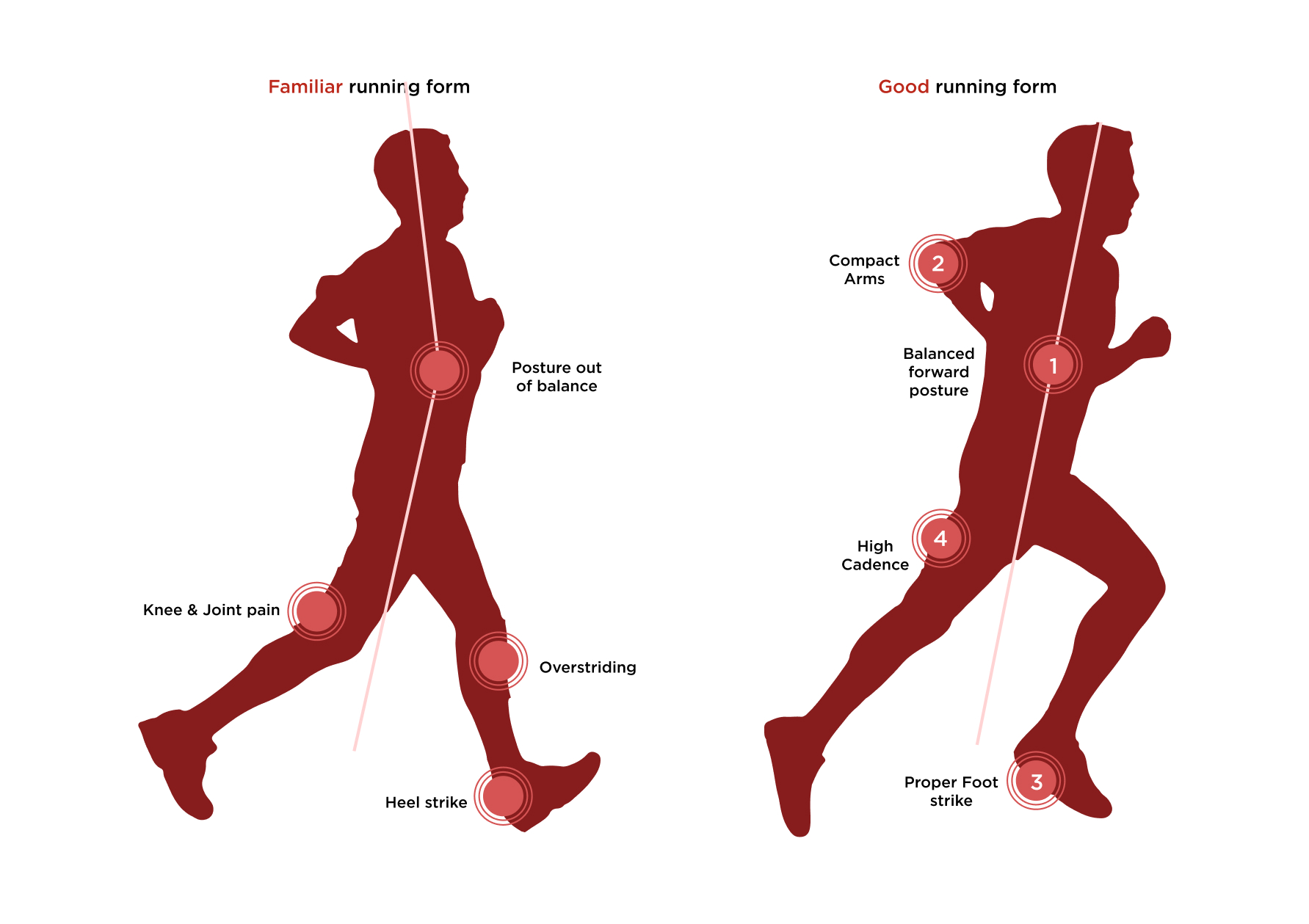
Developing good running technique takes time and consistent effort, requiring constant reflection during running to ensure we are employing proper technique. Like any habit, incorrect running technique is a behavior that needs to be changed, which requires effort and time.
Pace & Intensity Guideline: Listen to Your Body
As we learned in the previous post about walking, our bodies use energy obtained from food for movement. In running activity, our bodies will primarily derive energy through aerobic processes during such movement and intensity, which means energy production in the presence of oxygen. Only occasionally, as beginners, will we reach the anaerobic threshold, where energy processes shift from primarily relying on oxidation with oxygen to anaerobic processes for energy production without the presence of oxygen.
To accurately determine running speeds, one should conduct a maximal aerobic capacity test. There are several tests available to assess aerobic capacity, which can be performed either in the field or in a laboratory.
The gold standard in aerobic capacity tests is the treadmill test (KF1 test); however, this type of test is typically used for elite athletes, is not financially feasible for most recreational runners, and is highly intense and therefore risky for the health of beginner recreational runners. Time-based tests like the Maximal Aerobic Speed (MAS) test, conducted in the field where the runner covers the longest possible distance in a 5-minute period, are much more accessible and less risky for recreational runners. Through this test, we can determine training zones.

Furthermore, as we are discussing the beginning stages of running, we will not conduct such tests; instead, we will monitor exertion based on heart rate or the runner’s perceived effort. Zones of training intensity will be determined using a simple formula of 220 beats per minute minus age to obtain the maximum heart rate value.
The determination of zones for a healthy person aged 42 is shown in Table 2. The runner’s feeling, also known as the subjective feeling of exertion or RPE (rate of perceived exertion), is expressed through Player RPE Questionnaire using the Ultrax application. Furthermore, we will also be guided by the intensity based on our own feeling, simplifying it as much as possible into five levels: “walking”, “recovery run”, “easy”, “moderate”, and “hard.”
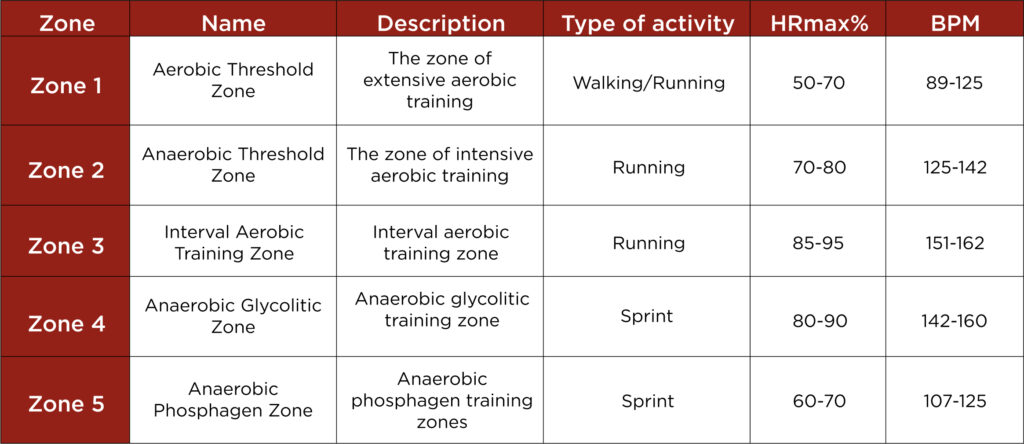
Although the MAS test lasts only 5 minutes, for a beginner, this is a considerable amount of time for continuous running. The prerequisites for starting the beginner program should include the ability to walk at a moderate-to-fast pace for 40-60 minutes with relative ease. Walking is used as active recovery and is a crucial part of a beginner running program.
Warm-up and Cool Down
To ensure safety and effectiveness, it’s essential that every training session includes a proper warm-up and cool-down. These components are critical for your success in executing a running activity. A warm-up prepares your body for the upcoming workout by increasing your heart rate, enhancing blood flow to muscles, tendons, and ligaments, and reducing the risk of injuries. The cool-down helps to bring your body back to a resting state by lowering your breathing rate, heart rate, blood pressure, and other physiological factors. It’s advisable to incorporate various static stretching exercises into your cool-down routine as well.
Dynamic stretches are highly beneficial for runners as they play a crucial role in priming your muscles for running activities. These stretches not only warm up your muscles but also target specific muscle groups that are essential for running. Unlike static stretches, which are typically performed after your workout, dynamic stretches involve active movements that allow your joints and muscles to move through a full range of motion. By incorporating dynamic stretches into your pre-run routine, you enhance blood circulation, improve flexibility, and optimize muscle activation, all of which contribute to better performance and reduced risk of injury during your run.
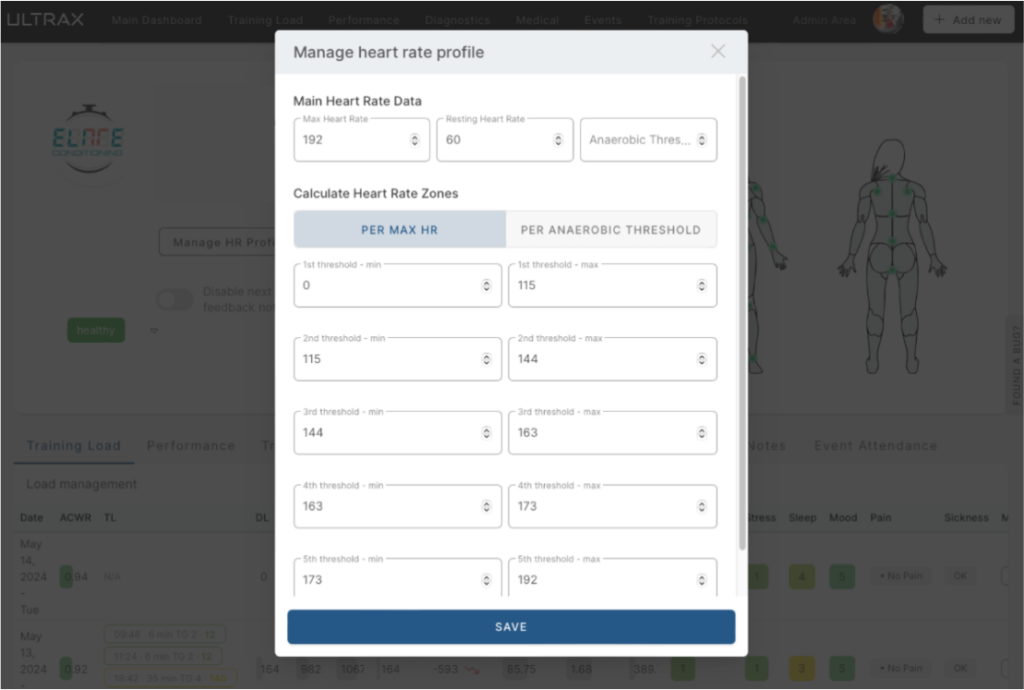
Once you complete your final interval, transition into a 3-to-5-minute cooldown period by maintaining a walking pace. Afterward, incorporate a static stretching routine into your cooldown. Static stretches involve holding a specific position without movement, allowing for a deeper and sustained stretch of targeted muscles. By incorporating static stretching into your post-workout routine, you can promote flexibility, improve muscle recovery, and reduce the risk of muscle soreness and injury. Take this opportunity to focus on areas that may have tightened during your workout, holding each stretch for a duration that feels comfortable and effective for you.
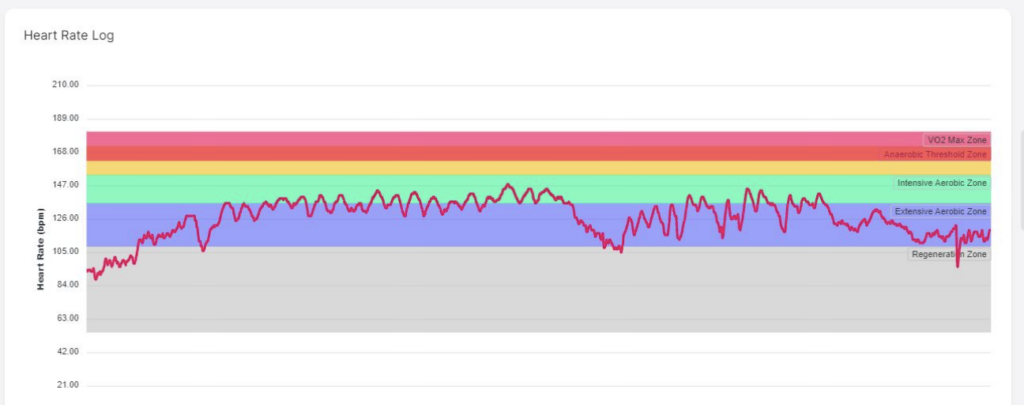
Realistic Goals: Remember You Are a Beginner
How to start with a running program? It’s important to set a realistic goal that we can achieve, ensuring steady progress and avoiding overwhelm. Below, we will outline a sample week of running for beginners as part of a comprehensive 9-week program. This structured approach will help build endurance and confidence over time, gradually preparing you for longer and more challenging runs as you advance in the program.
Conclusion
Transitioning from walking to running represents a significant step toward enhancing cardiovascular fitness and endurance. For beginners, mastering the basics of running is paramount to prevent injuries and foster a sustainable and enjoyable running experience. Studies by Vedran Markotić et al. and other researchers have underscored the profound psychological benefits of consistent running, including stress management and improved self-image. By following these guidelines and gradually increasing training intensity, beginners can develop endurance, confidence, and enjoyment in their running journey. Remember, patience and consistency are key elements in building a sustainable running routine that leads to lasting fitness benefits and a sense of accomplishment.



References
- Agus, A & Sari, Monica Prima. (2020). The Impact of Jogging on the Improvement of Physical Fitness. 10.2991/assehr.k.200824.199.
- Markotić, Vedran & Pokrajcic, Vladimir & Babić, Mario & Radančević, Dorijan & Grle, Maki & Miljko, Miro & Kosović, Vilma & Jurić, Ivan & Vidaković, Marijana. (2020). The Positive Effects of Running on Mental Health. Psychiatria Danubina. 32. 233-235.
- Vincent HK, Kilgore JE 3rd, Chen C, Bruner M, Horodyski M, Vincent KR. Impact of Body Mass Index on Biomechanics of Recreational Runners. PM R. 2020 Nov;12(11):1106-1112. DOI: 10.1002/pmrj.12335. Epub 2020 Feb 22. PMID: 31994820.
- Jafarnezhadgero, AmirAli & Jahangirpour, Azin & Parsa, Hamed & Sajedi, Heidar & Granacher, Urs & Oliveira, Anderson. (2023). The Impact of Excessive Body Weight and Foot Pronation on Running Kinetics: A Cross-Sectional Study. Sports Medicine – Open. 9. 10.1186/s40798-023-00663-8.
- Hannigan, J.J. & Pollard, Christine. (2020). Differences in running biomechanics between a maximal, traditional, and minimal running shoe. Journal of Science and Medicine in Sport. 23. 15-19. 10.1016/j.jsams.2019.08.008.
- Michaud, Thomas C., author. Injury-free running : your illustrated guide to biomechanics, gait analysis, and injury prevention / Tom Michaud. Second edition. Chichester, England : Lotus Publishing ; Berkeley, California : North Atlantic Books, 2021.
- Nigg B, Baltich J, Enders H, et al. Running shoes and running injuries: myth busting and a proposal for 2 new paradigms:“preferred movement path” and “comfort filter.” Br J Sports Med. 2015;49:1290–1294.
- https://www.simonbrookercoaching.com/news/what-is-running-form
- Bok, D. (2019). Visoko-intenzivni intervalni trening: čaroban trening za zdraviji život. Medicus, 28, 155-165.
- Bok, D. (n.d.). Praćenje opterećenja u treningu izdržljivosti . Zagreb, Kineziološki fakultet Sveučilišta u Zagrebu.

